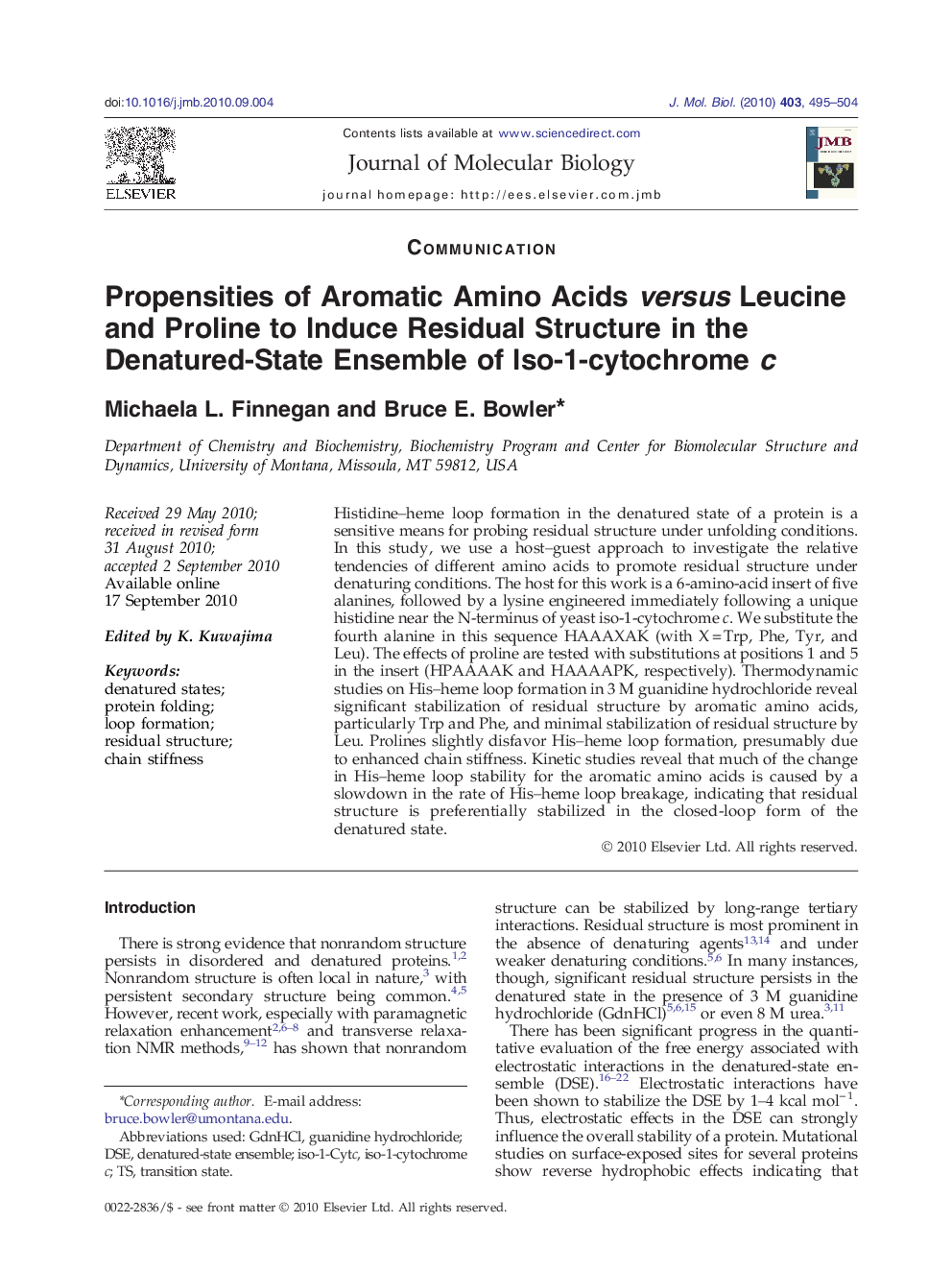| کد مقاله | کد نشریه | سال انتشار | مقاله انگلیسی | نسخه تمام متن |
|---|---|---|---|---|
| 2185381 | 1095977 | 2010 | 10 صفحه PDF | دانلود رایگان |

Histidine–heme loop formation in the denatured state of a protein is a sensitive means for probing residual structure under unfolding conditions. In this study, we use a host–guest approach to investigate the relative tendencies of different amino acids to promote residual structure under denaturing conditions. The host for this work is a 6-amino-acid insert of five alanines, followed by a lysine engineered immediately following a unique histidine near the N-terminus of yeast iso-1-cytochrome c. We substitute the fourth alanine in this sequence HAAAXAK (with X = Trp, Phe, Tyr, and Leu). The effects of proline are tested with substitutions at positions 1 and 5 in the insert (HPAAAAK and HAAAAPK, respectively). Thermodynamic studies on His–heme loop formation in 3 M guanidine hydrochloride reveal significant stabilization of residual structure by aromatic amino acids, particularly Trp and Phe, and minimal stabilization of residual structure by Leu. Prolines slightly disfavor His–heme loop formation, presumably due to enhanced chain stiffness. Kinetic studies reveal that much of the change in His–heme loop stability for the aromatic amino acids is caused by a slowdown in the rate of His–heme loop breakage, indicating that residual structure is preferentially stabilized in the closed-loop form of the denatured state.
Journal: Journal of Molecular Biology - Volume 403, Issue 4, 5 November 2010, Pages 495–504